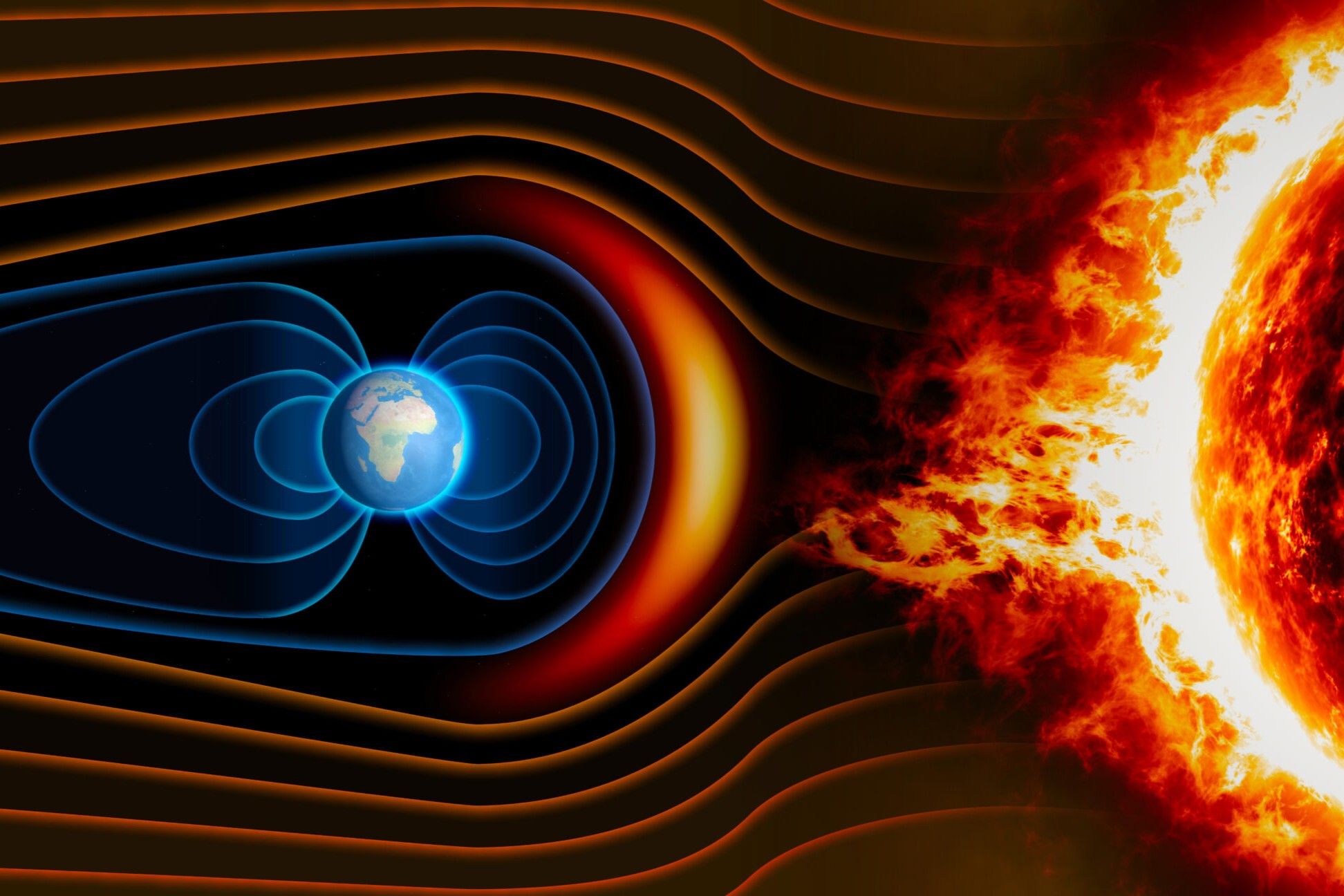
Ever wondered what protects Earth from harmful solar winds and cosmic radiation? The magnetosphere is our planet's invisible shield, a magnetic field that extends thousands of miles into space. This protective bubble is crucial for life on Earth, deflecting charged particles from the sun and cosmic rays. Without it, our atmosphere could be stripped away, leaving us vulnerable to harsh space weather. But how does this magnetic field work? What creates it? And why is it so important? In this blog post, we'll explore 28 fascinating facts about the magnetosphere, shedding light on its mysteries and significance. Buckle up for an electrifying journey through Earth's magnetic shield!
What is the Magnetosphere?
The magnetosphere is a region around a planet dominated by its magnetic field. This invisible shield protects the planet from solar wind and cosmic radiation. Let's dive into some fascinating facts about Earth's magnetosphere.
-
Earth's magnetosphere extends thousands of kilometers into space, forming a protective bubble around the planet.
-
The magnetosphere is shaped by the solar wind, a stream of charged particles emitted by the Sun.
-
The boundary where the solar wind meets the magnetosphere is called the magnetopause.
-
Earth's magnetic field is generated by the movement of molten iron in its outer core.
The Role of the Magnetosphere
The magnetosphere plays a crucial role in protecting life on Earth. It deflects harmful solar and cosmic radiation, ensuring our atmosphere remains intact.
-
Without the magnetosphere, solar wind could strip away Earth's atmosphere, making life impossible.
-
The magnetosphere helps to create the beautiful auroras, also known as the Northern and Southern Lights.
-
Auroras occur when charged particles from the Sun collide with atoms in Earth's atmosphere, causing them to glow.
-
The magnetosphere also protects satellites and other space technology from radiation damage.
Variations in the Magnetosphere
The magnetosphere isn't static; it changes in response to solar activity and other factors. These variations can have significant effects on Earth and its inhabitants.
-
Solar storms can cause geomagnetic storms in the magnetosphere, disrupting communications and power grids.
-
The magnetosphere can expand and contract depending on the intensity of the solar wind.
-
During periods of high solar activity, the magnetosphere can become highly compressed.
-
The magnetosphere has a tail, known as the magnetotail, which extends away from the Sun.
Discoveries and Research
Scientists have been studying the magnetosphere for decades, uncovering many of its mysteries. Research continues to reveal new insights into this vital protective shield.
-
The first spacecraft to study the magnetosphere was NASA's Explorer 1, launched in 1958.
-
The Van Allen radiation belts, discovered by Explorer 1, are regions of trapped charged particles within the magnetosphere.
-
The THEMIS mission, launched in 2007, studies the processes that cause auroras and other magnetospheric phenomena.
-
The Magnetospheric Multiscale (MMS) mission, launched in 2015, investigates magnetic reconnection, a process that converts magnetic energy into kinetic energy.
The Magnetosphere and Other Planets
Earth isn't the only planet with a magnetosphere. Other planets in our solar system also have magnetic fields, each with unique characteristics.
-
Jupiter has the largest and most powerful magnetosphere in the solar system.
-
Saturn's magnetosphere is influenced by its moons, particularly Enceladus, which emits water vapor and ice particles.
-
Mercury has a weak magnetosphere, only about 1% the strength of Earth's.
-
Mars has localized magnetic fields, remnants of a once-global magnetosphere.
Human Impact on the Magnetosphere
Human activities can also affect the magnetosphere, particularly through the use of technology and space exploration.
-
High-altitude nuclear tests in the 1960s created artificial radiation belts within the magnetosphere.
-
Satellite launches and space missions can temporarily disturb the magnetosphere.
-
The increasing number of satellites and space debris poses a risk to the magnetosphere's stability.
-
Understanding the magnetosphere is crucial for planning future space missions and protecting astronauts from radiation.
Fun Facts About the Magnetosphere
Here are some intriguing tidbits about the magnetosphere that highlight its complexity and importance.
-
The magnetosphere can produce sounds, known as "whistlers," caused by lightning strikes on Earth.
-
The shape of the magnetosphere resembles a comet, with a long tail extending away from the Sun.
-
The magnetosphere's strength varies over time, influenced by changes in Earth's core and solar activity.
-
Studying the magnetosphere helps scientists understand space weather and its impact on Earth.
The Magnetosphere's Role in Our Lives
The magnetosphere does more than just shield Earth from harmful solar radiation. It also plays a crucial role in navigation systems and communication networks. Without it, our satellites would be at risk, and we’d face disruptions in GPS and radio signals. The auroras we marvel at are direct results of interactions within this magnetic field. Scientists continue to study the magnetosphere to better understand space weather and its impacts on our technology. Knowing these facts helps us appreciate the invisible shield protecting our planet. Next time you use your GPS or see a stunning aurora, remember the magnetosphere’s vital role. It’s not just a scientific curiosity; it’s a guardian of our modern way of life. So, keep an eye on the skies and stay curious about the forces that keep our world safe.
Was this page helpful?
Our commitment to delivering trustworthy and engaging content is at the heart of what we do. Each fact on our site is contributed by real users like you, bringing a wealth of diverse insights and information. To ensure the highest standards of accuracy and reliability, our dedicated editors meticulously review each submission. This process guarantees that the facts we share are not only fascinating but also credible. Trust in our commitment to quality and authenticity as you explore and learn with us.
